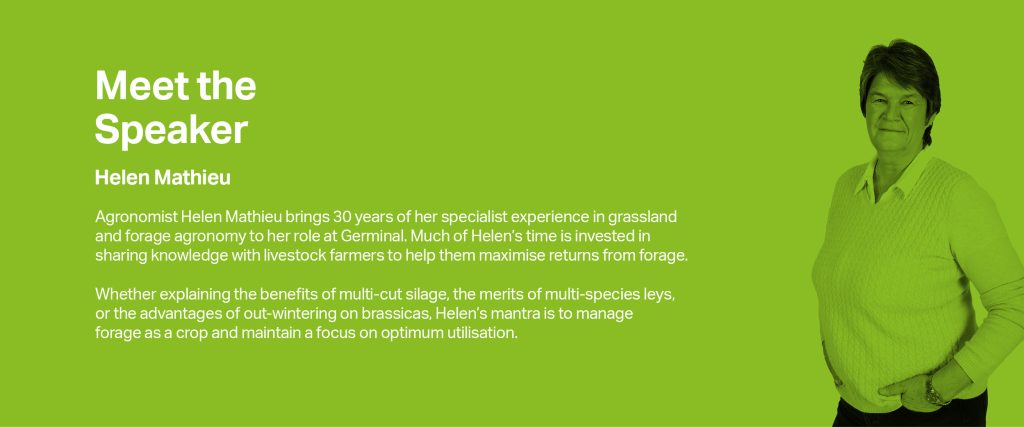Germinal grassland experts Helen Mathieu and Ben Wixey discuss sward assessment and getting more from your grass this winter.
Our practical advice will help boost next year's profitability, extend your grazing season, and help set you up for a flying start in the new year.
Webinar Q & A
We managed to answer most of the questions raised during our Q&A however we had a few that we didn't get time to deal with which we have now answered below.
Are clover varieties becoming more competitive? The last three years of new grass leys have been swamped by clover.
Managing white clover isn't always straightforward. Mowing rather than grazing leaves the sward more open in the bottom and the grass regrowth is slower, which in mid-summer can encourage clover dominance. Swards with poor grass ground cover can also lead to more space for clover to fill the gaps. We do sometimes observe clover become more dominant in high tetraploid content leys, where the sward tends to be more open in the bottom. Dry/hot periods slow the grass growth and suit the legumes. Some soil types suit clovers more than others. It is about getting a balance of grasses, and the correct blend of clovers to suit the purpose of the ley.
With a paddock grazing horses, some parts of the sward are rejected ungrazed the other is grazed to a tight detail. What parameters can be used to identify the cause?
I would look at exactly which plant species is being rejected in the first instance. Thereafter, it could be a soil nutrient issue that the horses are finding unpalatable. Identify plant species and do a broad spectrum soil analysis.
My experience of rotational grazing down to 5cm is the abundance of 'bogs' where cows reject the area, which then goes to head. What is the best suggestion please as to topping it, mowing for silage, and how often and how soon?
Bogs are the rejected areas, usually associated with where the cows urinated and defecated during the previous round. To clear the ley down to the bottom, try pre-mowing before grazing, you should find they will then eat it up and it will help reset the paddock for the next round.
What is the best way to fix P&K?
Usually, the best source of P and K will be from your own farmyard manure or slurry. Alternatively, if it is a seriously limiting factor to yield and the indices are very low, then bagged product should be used.
I looked at a two-year-old sward (that’s mainly used for silaging) today and it is quite gappy. Are there any grazing measures we could do with store lambs over the winter to help the grass to tiller more and fill in the gaps, or better to do something remedial in the spring?
If it's a two-year-old silage ley, it might be Italian ryegrasses or hybrids. So, it is going to run out of steam fairly soon. If it is very open, you can still stitch in some grasses that would be grazed in a few months time. It is more about working out what you need to do with the field going forward rather than just a quick fix for winter feeding here.
Our Webinars
These Germinal webinars give us an opportunity to hear directly from you, address your concerns or challenges and share knowledge back and forth on how modern, sustainable and profitable farming is achieved through great grassland management.


